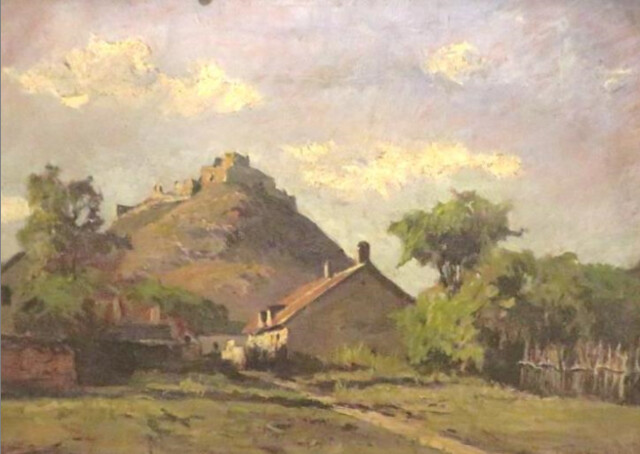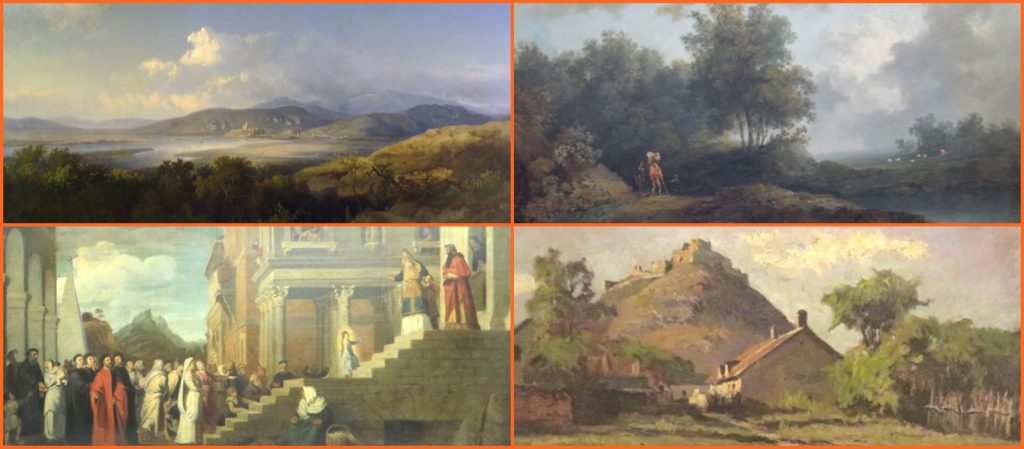The https://english.atlatszo.hu use cookies to track and profile customers such as action tags and pixel tracking on our website to assist our marketing. On our website we use technical, analytical, marketing and preference cookies. These are necessary for our site to work properly and to give us inforamation about how our site is used. See Cookies Policy
Orban’s new, ‘austere’ office decorated with 38 pieces of historic artwork from public museums
Starting January 2019, the Office of the Prime Minister is not in the House of Parliament any longer. Viktor Orban’s office moved into the former Carmelite Monastery in the Buda Castle. The government and its propaganda media emphasize that the new office of the prime minister is simple and austere. It does look simple with its white walls and dark furniture. However, the carpets of the building complex were borrowed from the Museum of Applied Arts, and the paintings and sculptures are loaned by the National Gallery. The particular pieces of art and their value were unknown for the Hungarian taxpayers, until Átlátszó’s freedom of information request was answered.
Not counting the value of the works of art, setting up the new office in the Carmelite monastery cost 4 billion forints (approximately €12.5 million at today’s exchange rate), and the total cost of moving the Prime Minister’s Office amounts to approximately 21 billion forints (€65.4 million).
Despite the enormous costs, the government continues to emphasize that Viktor Orbán’s new office is ‘austere’. To prove the point, the building complex was presented to a few journalists in December 2018.
No one was allowed to take photographs due to the strict security rules. However, based on the information that was gained during the press visit, different media outlets made it public that the carpets of the Prime Minister’s new office were borrowed from the Museum of Applied Arts and paintings from the Hungarian National Gallery.
It was at the end of December 2018 that Atlatszo first asked for the list of works of art borrowed from public collections for the Prime Minister’s Office. Then both museums replied that they did not know which particular items were sent to Orbán’s new office.
In the second freedom of information request Átlátszó asked the Hungarian Museum of Fine Arts, that manages the Hungarian National Gallery, for a list of all the works borrowed between 2015 and 2018, and in this way they received the information regarding the Prime Minister’s Office.
The Prime Minister's Office borrowed a total of 38 works of art (34 paintings and 4 statues) from the Museum of Fine Arts from 28 November 2018 until 31 December 2023.
You can see most of the 38 artworks in question here:

Interestingly, a few hours after the Museum of Fine Arts sent out the list of artworks rented to the Office and other public institutions, an article was published on the pro-government Origo website stating there is nothing special about renting paintings of national interest.
This was practically a ‘preemptive strike’ before this story of Atlatszo was published. Origo published a lengthy article detailing that it is common practice in Europe for public institutions to rent artwork from museums, ‘in spite of the fact that some media outlets are questioning its legitimacy.’
Origo lists a number of Hungarian public institutions that have borrowed paintings from the Museum of Fine Arts, but there is not a single word about the Prime Minister’s Office in the entire article.
Renting artwork from public collections is undoubtedly a ‘common practice’ in Hungary. Atlatszo reported in 2014 that the Museum of Fine Arts and the National Gallery loaned paintings to state institutions, which display the pictures in their buildings for representational and decorative purposes.
According to the practice of artwork lending, paintings can only be borrowed from the storerooms of museums, not from permanent exhibitions; and graphics cannot be borrowed at all. According to Atlatszo’s sources, the Prime Minister’s Office was specifically interested in historical paintings, including some particular works displayed at permanent exhibitions. These were not given to them, the Museum of Fine Arts offered reproductions of the requested pictures or copies made by the painters’ students. The Office did not take the offered copies, the 38 artwork in the above gallery are all original pieces of art.
The Hungarian public still did not receive detailed information about the interior of the new office of Viktor Orbán, as only a few carefully selected photographs are available published by the Prime Minister’s Cabinet Office.
Interestingly, the official photos show white walls in a room of the monastery that used to be decorated by frescoes. It turned out that the room was painted white during the most recent renovation. Heritage conservation professionals have only managed to do some preservation work on the frescoes before they were painted over, so they might be restored later.
Written by Katalin Erdélyi
English version by Zsuzsanna Liptákné Horváth. You can read the original, Hungarian-language story here.


